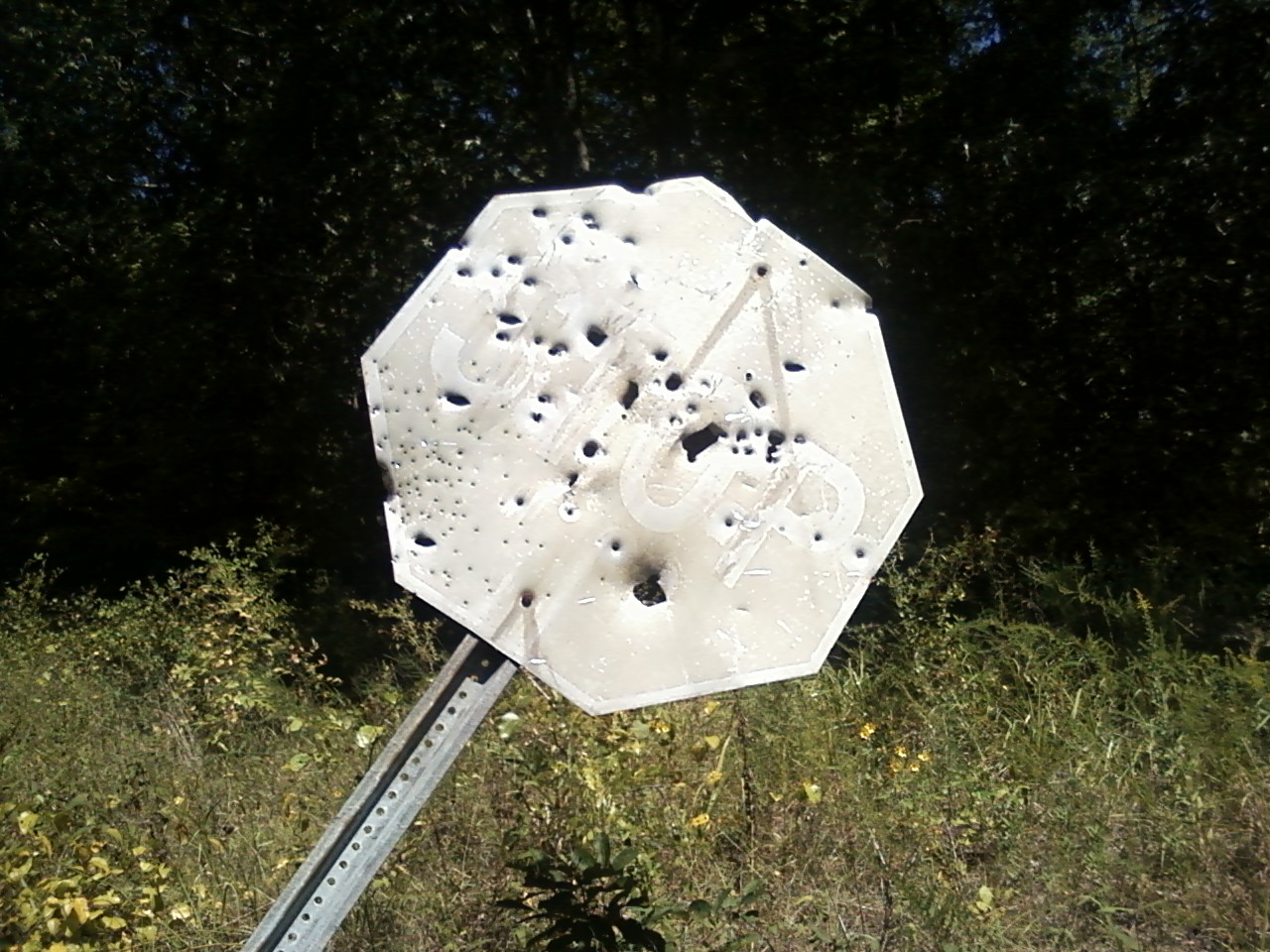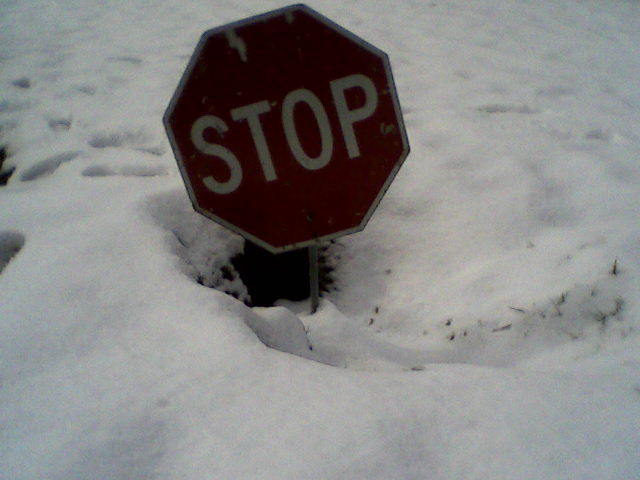TTAP Newsletter: RoadTalk
Remember Retroreflectivity? It's Still a Big Deal.
by Matt Cate, P.E.
Do you fondly remember the day a couple of years ago when you heard that the Federal Highway Administration (FHWA) had relented on its mandate that signs must meet the "new" minimum retroreflectivity requirements first introduced in Revision 2 to the 2003 Edition of the Manual on Uniform Traffic Control Devices (MUTCD)? Did you gladly return to the trusty old ways of engineer grade sign sheeting and faded old signs on the roadside? If so, you may want to keep reading this article.
On May 14, 2012, FHWA simultaneously released Revisions 1 and 2 to the 2009 MUTCD. These revisions went into effect on June 13, 2012. Revision 1 addresses concerns from the traffic engineering community regarding changes to the treatment of Standards in the 2009 MUTCD and the ability to apply engineering judgment to situations where applicable standards may need to be modified to reflect roadway geometry, driver behavior, or other operational considerations. Revision 2 eliminated or delayed several compliance dates established in prior versions of the MUTCD, including three related to the traffic sign minimum retroreflectivity requirements established in Revision 2 to the 2003 MUTCD.
It is very important to note that Revision 2 primarily revised Table I-2 (Target Compliance Dates Established by the FHWA) to eliminate 46 items and to revise or extend an additional 4 items. This revision eliminated the January 2015 retroreflectivity compliance date for all applicable ground-mounted signs (excluding street name signs) and the January 2018 compliance date for overhead guide signs and street name signs. Revision 2 also modified the earliest retroreflectivity-related compliance date, delaying the date for "Implementation and continued use of an assessment or management method that is designed to maintain regulatory and warning sign retroreflectivity at or above the established minimum levels [as set in Section 2A.08]." The new target compliance date for this requirement is June 13, 2014.
So what do these changes mean for agencies that maintain traffic signs on public roads? First, these affect only the compliance dates associated with the minimum retroreflectivity standard, not the standard itself. The original retroreflectivity levels apply to all of the signs (including street name signs) addressed by Revision 2 to the 2003 MUTCD. In other words, we are still required to meet these retroreflectivity standards – only the deadline for individual signs to meet these requirements has been eliminated.
The remaining compliance date indicates that agencies must adopt and implement a retroreflectivity management or assessment system by June of this year. The MUTCD defines several acceptable options for each type of system. Retroreflectivity management techniques include expected sign life, blanket replacement, and control signs. Assessment techniques include nighttime visual inspection (comparison panels, calibrated signs, and consistent parameters) and measured sign retroreflectivity. An effective and compliant management system will apply one or more of these techniques to all signs within an agency’s jurisdiction to ensure that these signs are maintained at or above the minimum retroreflectivity levels described in Section 2A.08 of the MUTCD. This system is intended to protect agencies in the event that some individual signs fall below the values in Table 2A-3.
If an agency does not have this retroreflectivity management system in place by June 13, there is no immediate penalty. However, the agency’s liability is potentially increased for any nighttime crash that occurs near a non-compliant sign. Without the information and documentation required by Section 2A.08 an agency may be unable to prove that it has taken adequate steps to ensure that signs meet these minimum retroreflectivity requirements. Ideally this system will document a number of relevant characteristics for each sign on the roadway network. Examples of these data include, but are not limited to:
- Sign description
- Location
- Direction faced by sign
- Sign Size
- Date of installation
- Date of last inspection (as required by selected management technique)
- Condition/retroreflectivity at last inspection
Without a deadline to guide the process of replacing individual signs, how should agencies proceed? This answer is provided in the introduction of the MUTCD. Any new or reconstructed device installed after the final effective date of the most recent version of the MUTCD (or adoption of this version by the state) shall be in compliance with the new edition or revision. This means that all new or replacement signs must comply with applicable minimum retroreflectivity standards. Existing devices may generally remain in use through the end of their useful service lives. Keep in mind that a sign may reach the end of its useful life long before it is stolen or damaged beyond repair – the MUTCD instructs agencies to consider many sign characteristics as part of their routine maintenance activities, including "proper position, cleanliness, legibility, and daytime and nighttime visibility." Furthermore, "Damaged or deteriorated signs, gates, or object markers should be replaced." Marginal daytime legibility is not enough to justify continued use of an existing sign. Excessive fading or loss of retroreflectivity indicates that a sign has reached the end of its service life. Any sign installed after retroreflectivity standards were in effect must be maintained at or above the minimum levels detailed in Table 2A-3 of the MUTCD.
TTAP Can Help
TTAP still has sign retroreflectometers available for loan to local agencies across Tennessee. We can also provide additional information and guidance to help your agency attain compliance with retroreflectivity standards. To borrow equipment or seek other assistance, contact TTAP at 1-800-252-7623 or TTAP@utk.edu.


Back-Contents-Forward
